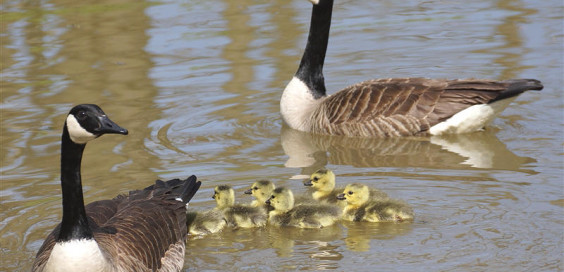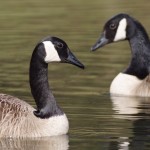
Creature Feature – The Canada Goose
Posted by Dustin Horton // February 5, 2019 // Articles, Creature Feature
Most folks can easily identify the Canada goose. In fact, it’s so familiar that we may take its stately elegance for granted. The most defining features of this large goose are its black head and neck and a white cheek patch. It usually resides near water and congregates in expansive, grassy areas like parks, golf courses and farm fields. These open places provide a good view of approaching danger. The Canada goose eats different grasses and aquatic vegetation. It “dabbles” — dipping forward and reaching its neck underwater in search of submerged plants. It’s comical to see a goose bum tipped skyward as it forages this way. In cold months, berries, seeds and agricultural grains are eaten. The Canada goose typically selects a mate sized similarly to itself, and pairs tend to mate for life. Mother Goose chooses the nest site, often using a muskrat mound or hump of collapsed cattails. Papa Goose aggressively protects her and the nest, reacting to threats with angry hissing. He may even pummel an intruder with bruising blows from his powerful beak and wings. Respect nest sites by steering clear. Most goslings stay with their parents for the first year. During noisy migrations, flocks fly in a V-formation called a “skein,” with the more experienced geese taking turns leading.
Article & Photo by Margie Manthey















